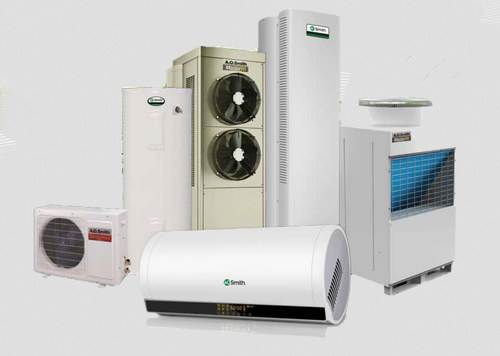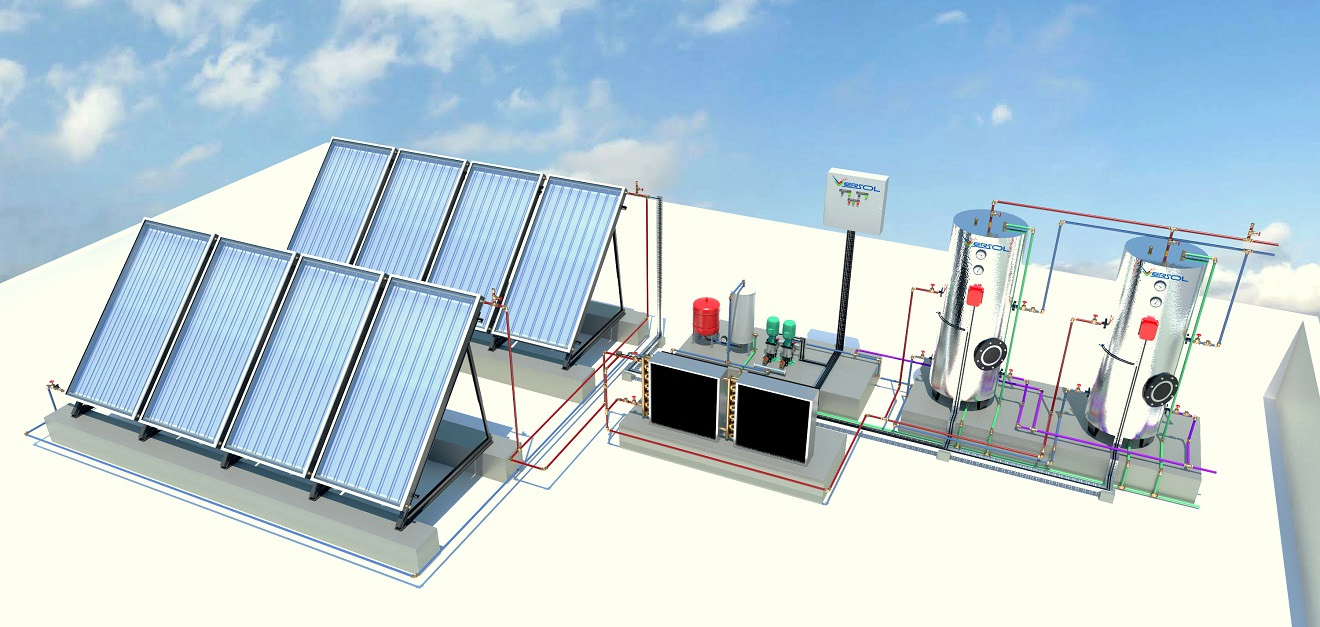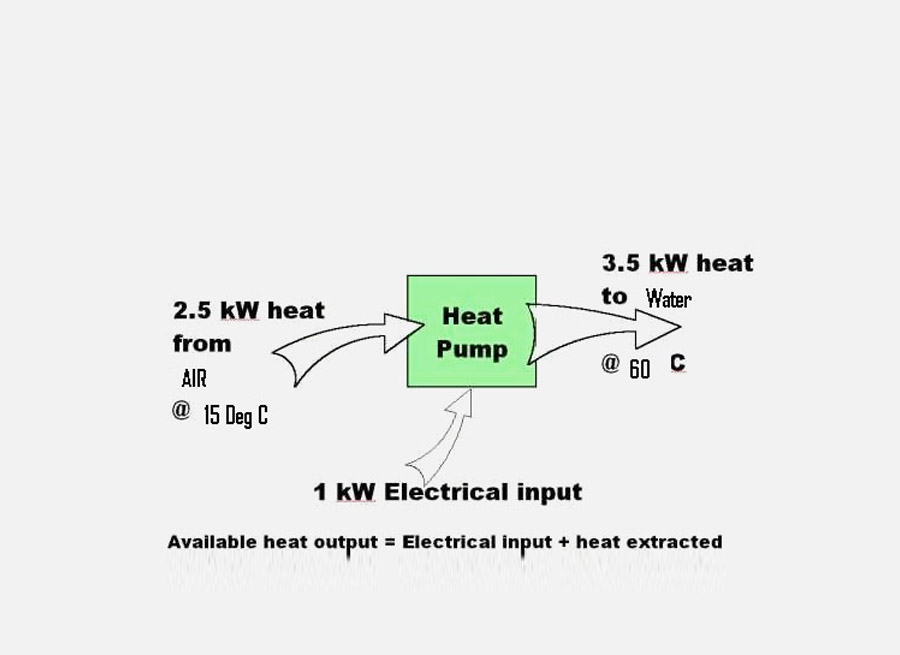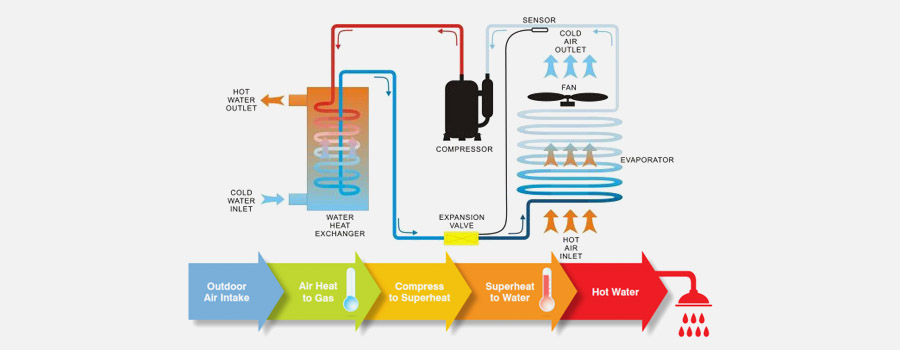Heat Pump : Air to Water

Heat pump water heaters use electricity to move heat from one place to another instead of generating heat directly. Therefore, they can be two to three times more energy efficient than conventional electric resistance water heaters. To move the heat, heat pumps work like a refrigerator in reverse.
While a refrigerator pulls heat from inside a box and dumps it into the surrounding room, a stand-alone air-source heat pump water heater pulls heat from the surrounding air and dumps it -- at a higher temperature -- into a tank to heat water
Heat pump water heaters installation for those who needs year-round hot water 24hrs*365days at a desired temperature and considerably wants to reduce the electricity bill spent on heating water. Cool exhaust air can be exhausted to the room or outdoors. Install them in a space with excess heat, such as a furnace room. Heat pump water heaters will not operate efficiently in a cold space. They tend to cool the spaces they are in. You can also install an air-source heat pump system that combines heating, cooling, and water heating. These combination systems pull their heat indoors from the outdoor air in the winter and from the indoor air in the summer. Because they remove heat from the air, any type of air-source heat pump system works more efficiently in a warm climate.
Applications
Heat pumps are also increasingly used to heat domestic hot water, the hot water used for kitchens, bathrooms, clothes washers, swimming pool heating etc.
Advantages of heat pump water heating include:
efficient conversion of energy to heat
the energy source is always available
it can provide energy-efficient heating for large amounts of water for use for space heating (e.g. underfloor), hot tubs and swimming pools
it can be used to boost other water heating systems
24*365 days hot water
Hot water at a desired temperature range
Centralised heating and thus space saving w.r.t to traditional heaters
Very limited space and flexi space allocation
Disadvantages of air-to-water heat pumps include
loss of efficiency as temperature decreases below 6–7ºC although some will continue to provide heating in temperatures down to -10–15ºC
purchase and installation costs are higher than for standard electric storage cylinder systems
space is needed to install the exterior unit
penetrations have to be made through the building cladding
outdoor units may be noisy
less efficient with low water use (1 or 2 person households)


